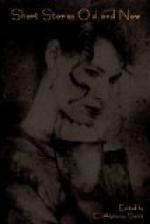“But,” I interposed, “you say that the skull was not upon the parchment when you made the drawing of the beetle. How then do you trace any connection between the boat and the skull—since this latter, according to your own admission, must have been designed (God only knows how or by whom) at some period subsequent to your sketching the scarabaeus?”
“Ah, hereupon turns the whole mystery; although the secret, at this point, I had comparatively little difficulty in solving. My steps were sure, and could afford but a single result. I reasoned, for example, thus: When I drew the scarabaeus, there was no skull apparent on the parchment. When I had completed the drawing I gave it to you, and observed you narrowly until you returned it. You, therefore, did not design the skull, and no one else was present to do it. Then it was not done by human agency. And nevertheless it was done.
“At this stage of my reflections I endeavored to remember, and did remember, with entire distinctness, every incident which occurred about the period in question. The weather was chilly (O rare and happy accident!), and a fire was blazing on the hearth. I was heated with exercise and sat near the table. You, however, had drawn a chair close to the chimney. Just as I placed the parchment in your hand, and as you were in the act of inspecting it, Wolf, the Newfoundland, entered, and leaped upon your shoulders. With your left hand you caressed him and kept him off, while your right, holding the parchment, was permitted to fall listlessly between your knees, and in close proximity to the fire. At one moment I thought the blaze had caught it, and was about to caution you, but, before I could speak, you had withdrawn it, and were engaged in its examination. When I considered all these particulars, I doubted not for a moment that heat had been the agent in bringing to light, on the parchment, the skull which I saw designed on it. You are well aware that chemical preparations exist, and have existed time out of mind, by means of which it is possible to write on either paper or vellum, so that the characters shall become visible only when subjected to the action of fire. Zaffre digested in aqua regia, and diluted with four times its weight of water, is sometimes employed; a green tint results. The regulus of cobalt, dissolved in spirit of nitre, gives a red. These colors disappear at longer or shorter intervals after the material written upon cools, but again become apparent upon the reapplication of heat.
“I now scrutinized the death’s-head with care. Its outer edges—the edges of the drawing nearest the edge of the vellum—were far more distinct than the others. It was clear that the action of the caloric had been imperfect or unequal. I immediately kindled a fire, and subjected every portion of the parchment to a glowing heat. At first, the only effect was the strengthening of the faint lines in the skull; but, on persevering in the experiment, there became visible at the corner of the slip, diagonally opposite to the spot in which the death’s-head was delineated, the figure of what I at first supposed to be a goat. A closer scrutiny, however, satisfied me that it was intended for a kid.”




